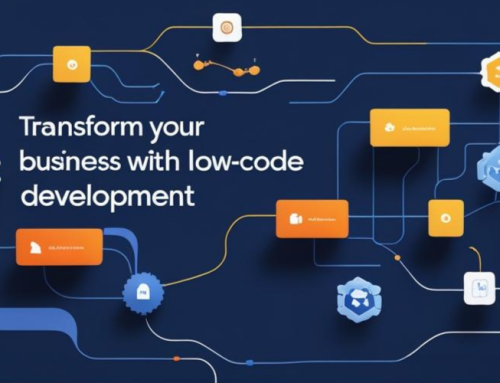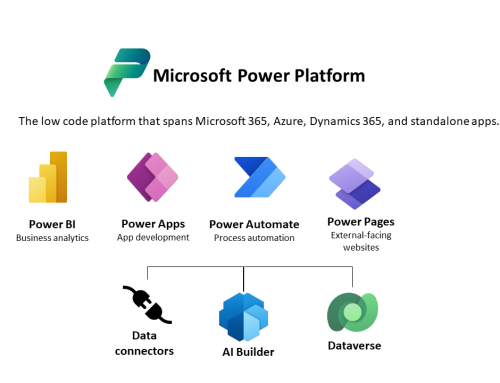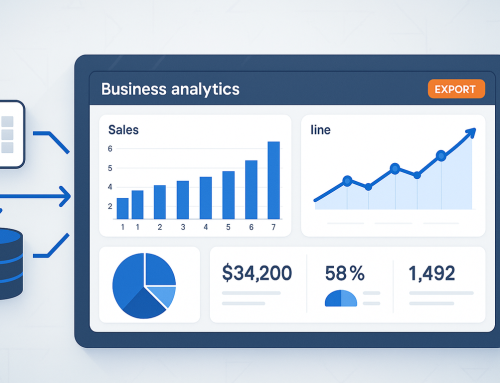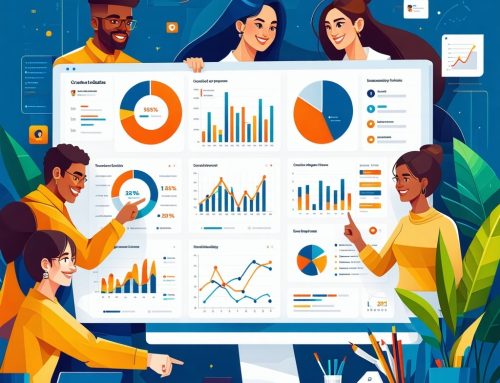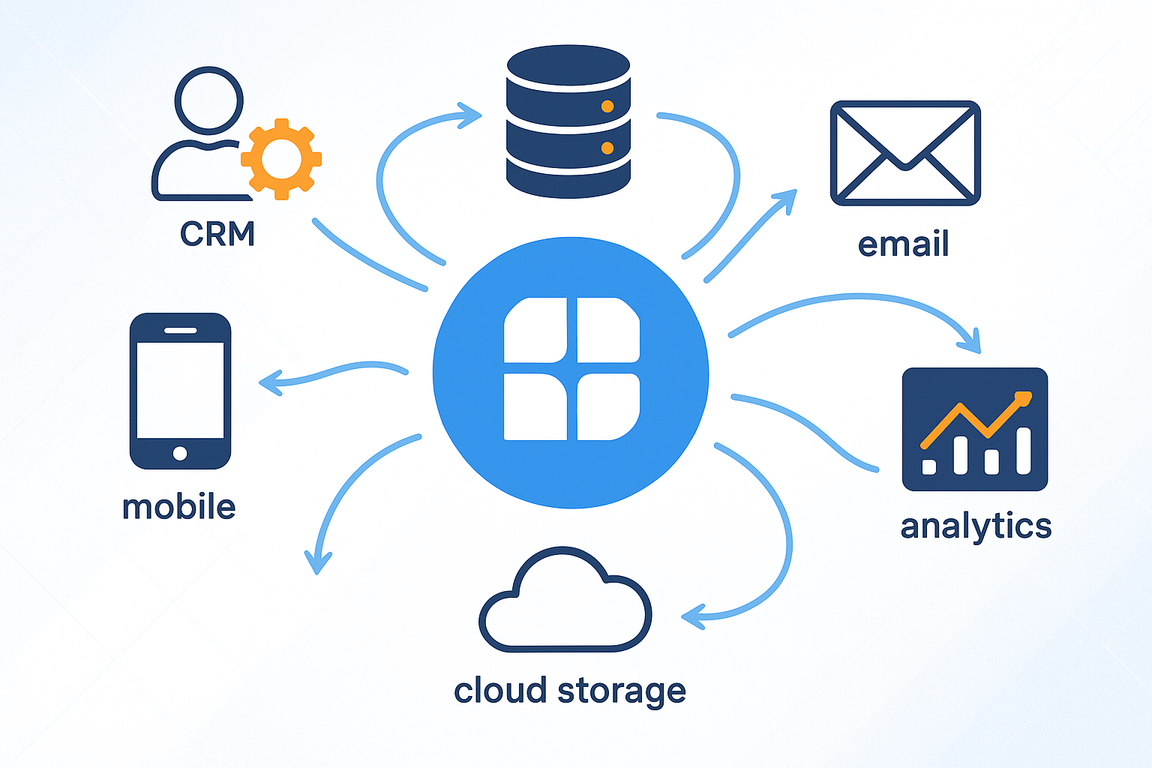
Mastering Power Platform Integration: A Comprehensive Guide
Integrating Microsoft Power Platform tools with existing systems can be both challenging and rewarding. This comprehensive guide explores the common integration challenges organizations face and provides best practices for using connectors and APIs effectively. Whether you’re an admin lead managing governance, a delivery lead overseeing implementations, or an individual trainer helping teams succeed, this guide will help you navigate the complexities of Power Platform integration.
Understanding Power Platform Integration Challenges
The Integration Landscape
Power Platform integration involves connecting various components like Power Apps, Power Automate, Power BI, and Copilot Studio with existing enterprise systems, databases, and third-party applications. The challenge lies in creating seamless connections while maintaining security, performance, and compliance.
Common Integration Pain Points
- Performance Bottlenecks: Slow response times when connecting to external systems
- Security Concerns: Managing authentication and data protection across multiple systems
- Scalability Issues: Handling increased load as organizations grow
- Maintenance Complexity: Keeping integrations updated and functional
- Data Consistency: Ensuring data integrity across connected systems
Integration Patterns and Best Practices
Power Automate Cloud Flows
For Admin Leads: Cloud flows provide a no-code or low-code approach to integration that can be monitored separately from conversational logic. This separation is crucial for governance and compliance.
For Delivery Leads: Existing cloud flows can be updated to integrate with Copilot Studio, making it easier to leverage current investments.
For Individual Trainers: Cloud flows offer a visual way to teach integration concepts without requiring deep coding knowledge.
Best Practices:
- Ensure cloud flows return results within 100 seconds to avoid timeouts
- Use the “Power Automate Process” plan for service principal ownership when scale or performance is a concern
- Implement parallel branches to handle timeouts gracefully
HTTP Requests and Connectors
For Admin Leads: Direct HTTP requests and connectors can be monitored as part of Copilot Studio Application Insights integration, providing better visibility into performance.
For Delivery Leads: These integrations can use Power Fx formulas for variables, conditions, and parameters, offering flexibility in implementation.
For Individual Trainers: The parsing and error handling support makes it easier to teach robust integration practices.
Best Practices:
- Filter results to return only essential data for better performance
- Use environment variables and secrets for secure configuration
- Isolate integration topics to maintain clean separation of concerns
Bot Framework Skills
For Admin Leads: Bot Framework skills support private endpoints, which is crucial for enterprise security requirements.
For Delivery Leads: Existing Bot Framework investments can be reused, providing cost-effective integration options.
For Individual Trainers: While requiring pro-code skills like C#, Bot Framework skills offer powerful customization capabilities.
Best Practices:
- Consider Azure subscription costs when planning Bot Framework integrations
- Plan for different application lifecycle management compared to Power Platform
- Leverage synchronous execution for real-time interactions
Middle Layer Integration Strategies
Data Enrichment and Transformation
Enhancing data quality before it reaches your workload can significantly improve decision-making and user interactions. This involves integrating external data sources and applying business logic to add context.
Implementation Tips:
- Use Dataverse custom APIs for complex data enrichment with a 2-minute timeout limit
- Implement Dataverse low-code plug-ins for minimal coding requirements
- Consider Azure Functions for serverless data processing
Security and Compliance
Data Masking: Protect sensitive information by obfuscating personal identifiers, financial data, and proprietary information. This is essential for GDPR and HIPAA compliance.
Data Validation: Ensure data integrity by implementing validation rules that check for completeness, correctness, and consistency.
Performance Optimization: Use caching and asynchronous processing to handle large data volumes efficiently.
Performance Optimization Strategies
Endpoint Performance Considerations
Speed of Integration: The performance of connected endpoints directly affects application speed. Slow endpoints create bottlenecks that impact user experience.
Conversational Experience: Users expect quick, seamless interactions. Response delays can interrupt conversation flow and cause frustration.
Query Performance: Optimize queries by:
- Minimizing data fetched
- Implementing caching strategies
- Using load balancing where applicable
Scalability and Reliability
High-performing endpoints contribute to application scalability and reliability. As user numbers grow, well-optimized endpoints can handle increased traffic without significant performance degradation.
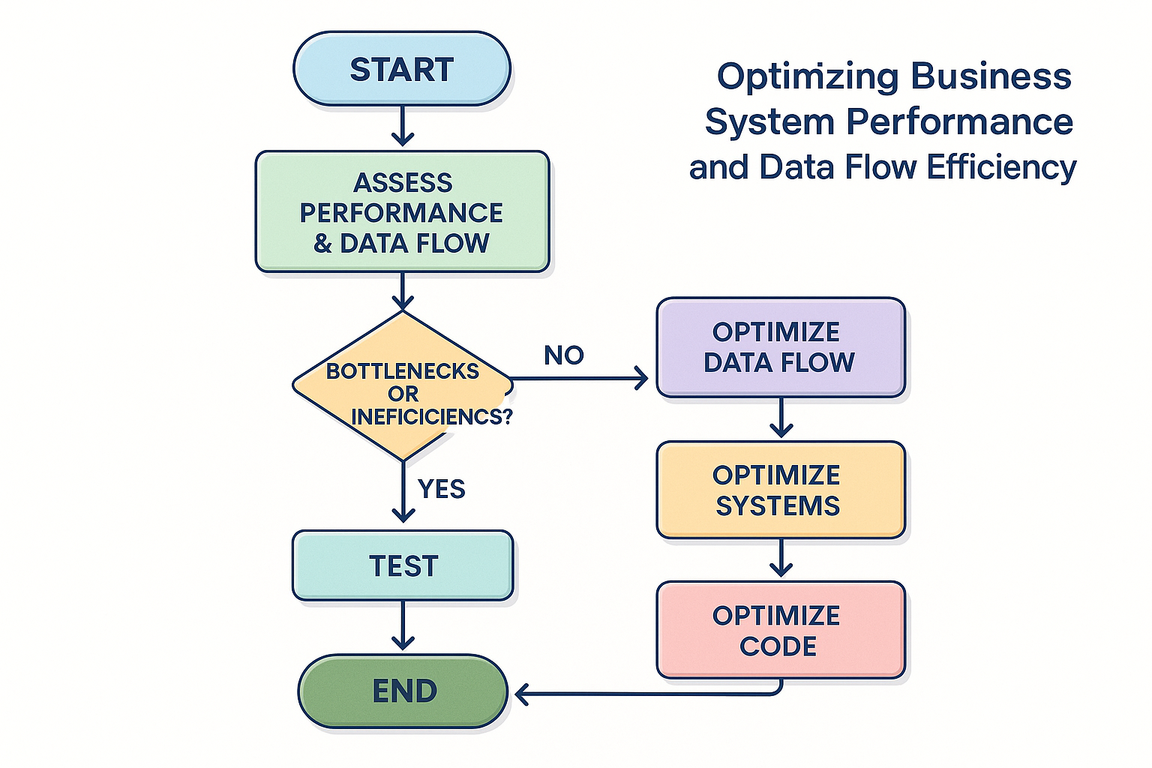
CloudStaff’s Integration Expertise
At CloudStaff, we understand that successful Power Platform integration requires more than technical knowledge. It requires a human-centric approach that considers the people using these systems.
Our Integration Approach
Human-Centric Design: We design integrations that enhance rather than complicate user workflows, ensuring that technology serves people effectively.
Comprehensive Support: From initial strategy to ongoing maintenance, we provide end-to-end support for Power Platform integrations.
Proven Methodologies: Our team has successfully implemented complex integrations across various industries, from healthcare to finance.
Why Choose CloudStaff for Integration
- Expertise Across All Personas: We understand the unique needs of admin leads, delivery leads, and individual trainers
- Security-First Approach: We prioritize data protection and compliance in all integration solutions
- Performance Optimization: We ensure integrations are fast, reliable, and scalable
- Ongoing Support: We provide continuous monitoring and optimization services
Real-World Integration Scenarios
Scenario 1: Healthcare System Integration
Challenge: A healthcare organization needed to integrate Power Platform with their existing EHR system while maintaining HIPAA compliance.
Solution: We implemented a middle-layer integration using Dataverse custom APIs with data masking and validation, ensuring patient data protection while enabling seamless workflow automation.
Scenario 2: Financial Services Automation
Challenge: A financial services company required real-time integration between Power Automate and their core banking systems.
Solution: We used Bot Framework skills with private endpoints to ensure secure, high-performance integration while maintaining existing security protocols.
Scenario 3: Manufacturing Process Optimization
Challenge: A manufacturing company needed to integrate Power BI with their production systems for real-time analytics.
Solution: We implemented HTTP connectors with optimized queries and caching strategies to provide real-time insights without impacting production system performance.
Best Practices Summary
For Admin Leads
- Governance First: Establish clear policies for integration development and deployment
- Monitoring Strategy: Implement comprehensive monitoring for all integrations
- Security Framework: Ensure all integrations meet organizational security standards
- Compliance Management: Maintain audit trails and compliance documentation
For Delivery Leads
- Performance Planning: Design integrations with scalability in mind from the start
- Team Enablement: Provide training and resources for integration development
- Quality Assurance: Implement testing strategies for all integration scenarios
- Change Management: Plan for integration updates and maintenance
For Individual Trainers
- Skill Development: Focus on teaching both technical and business aspects of integration
- Hands-On Learning: Provide practical experience with real integration scenarios
- Best Practice Sharing: Share lessons learned and common pitfalls to avoid
- Continuous Learning: Stay updated with the latest Power Platform features and capabilities
Call to Action
Ready to tackle your Power Platform integration challenges? Book a discovery call with our integration experts today. We’ll help you design and implement integrations that work for your people and your business.
Visuals
- Integration Architecture Diagram: Visual representation of Power Platform integration patterns
- Performance Optimization Flowchart: Step-by-step guide to optimizing integration performance
- Security Framework Infographic: Overview of security best practices for integrations
Conclusion
Power Platform integration doesn’t have to be overwhelming. With the right approach, tools, and expertise, you can create seamless connections that enhance your organization’s capabilities while maintaining security and performance. At CloudStaff, we’re here to help you navigate these challenges and unlock the full potential of your Power Platform investments.
Remember, successful integration is about more than connecting systems. It’s about connecting people with the tools they need to succeed. By focusing on human-centric design and proven best practices, you can create integrations that truly make work easier and more effective.
For more insights and updates, follow us on LinkedIn and Twitter.






